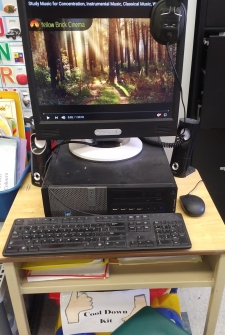
Happy New Year!
I hope 2018 has been off to a wonderful start for you and your loved ones (it’s hard to believe we’re mid-month already).
It seems like forever since I last shared thoughts, ideas and classroom resources. Not for lack of desire, more to do with obligations, commitments and responsibilities that somehow or another find a way to redirect me from the screen (life takes precedent after all).
In order to better balance life and leisure (New Year’s resolution number one), I thought I’d try what the rest of the world has been doing so beautifully already – writing in snippets! Capturing big ideas in photographs and captions – less is more after all!

This year, I am blessed with 27 lively Kindergarten students who keep me busy and on my toes, literally from the moment I step into the classroom. To say there are no challenges would be far from the truth. In the 17 years that I’ve been teaching, there have been ample opportunities for growth and learning from the experiences and circumstances I embarked on in the classroom – as every teacher can agree with, I’m sure.
So I thought the first snippet I’d share is my Cool Down Kit, a behaviour management and self-regulation tool I use in the classroom, which runs parallel with mindfulness ideologies.
With the growing research on mindfulness and its impact on our well-being and importance in maintaining a healthy mind-body state, my Cool Down Kit is a simple avenue for helping students restore balance when dealing with emotionally charged situations, whilst in the classroom setting. While the focus of today’s post is not about mindfulness, it is definitely a topic worth digging further into. In short, mindfulness is the awareness that arises through paying attention, on purpose, to the internal and external experiences occurring in the present moment, non-judgmentally. It’s about knowing what is on your mind. Its use in the classroom is gaining popularity, especially when it comes to helping students navigate their emotions and adapt coping strategies when they’re upset or angry. There is ample research on the benefits of mindfulness exercises, not just within the school setting, but at home, work and at large. A good place to start your research, if you wish, is here.
At one point or another every child will encounter overwhelming emotions; anger, sadness, frustration, anxiety. Without knowing how to self-regulate and control their emotions, or without having a safe place to escape, these emotions can quickly spiral into out-of-control behaviour. Having a quiet corner in the classroom to calm down can give children the responsibility of self-regulating their emotions in a peaceful way and in a safe place.
 To introduce this concept, I began the lesson by reading the book, When Sophie Gets Angry – Really, Really Angry by Molly Bang. We had a great follow-up discussion, relating personal stories and experiences to the events in the story. We continued by brainstorming various scenarios that can cause a person to be upset (i.e., someone grabbing their toy, not being able to play with a given object at a particular time, being ignored by a friend, breaking something important, feeling tired, being worried, scared, etc.).
To introduce this concept, I began the lesson by reading the book, When Sophie Gets Angry – Really, Really Angry by Molly Bang. We had a great follow-up discussion, relating personal stories and experiences to the events in the story. We continued by brainstorming various scenarios that can cause a person to be upset (i.e., someone grabbing their toy, not being able to play with a given object at a particular time, being ignored by a friend, breaking something important, feeling tired, being worried, scared, etc.).

One of the things I felt was important to highlight during our talk is that emotions are temporary visitors. They come but then we must let them go. Holding onto negative emotions can take away from our happy place. And so, once we reflect and deal with them, we set them free again. So yes, feeling frustrated or angry is perfectly okay, it’s normal – we all experience such emotions at times, but we simply can’t hold onto them. Students need to understand their trigger points and learn how to deal with them in a productive way. For some students, this will require more intervention and teacher support. That of course, is something to be dealt with on an individual basis.

The next thing I wanted to address with my students was the way we sometimes see others, or even ourselves have, dealt with upsetting situations in the past. I was pleasantly surprised to find that students were brave and honest in openly sharing both positive and negative reactions they’ve had to different feelings. After some reflecting and open dialogue, we concluded that emotional responses can fall into two categories; some of which are acceptable and others which are unacceptable (i.e, walking away, talking it through with someone vs hitting, throwing objects).
It was a worthwhile discussion, certainly.
It was then the perfect opportunity to introduce some Cool Down Strategies (some of which are based on mindfulness training).

After reviewing the list, I introduced the various objects in the Cool Down Kit. Each of the items in the bin is meant to supplement the list of Cool Down Strategies by giving students more of a tactile means to help re-gain emotional balance. They each serve as a calming activity, essentially preparing students to re-integrate back into the classroom and resume learning.

My Cool Down Kit is housed in a portable wagon and tucked underneath the classroom computer desk, where it is easily accessible to students. Classical music is cued on the computer screen along with headphones.
 Some of the items in my Cool Down Kit include:
Some of the items in my Cool Down Kit include:
- Picture Books
- Activity Magazines
- Letter/Number Wheels
- Colouring Book/Crayons
- Squeeze Toys
- Counters
- Puzzles
- Rubik’s Cube
- Breathing Visual
- Counting Beads
- Noise Blocking Headphones
- Writing Pad/Pencil

Other items that could be included in the kit include:
- an iPad or tablet with games that are repetitive and calming
- books on expressing feelings (a list of books can be found here)
- stuffed animal
I am always looking to update my kit and add onto my strategies list. Please feel free to share ideas, resources and strategies that you find useful as well.
Thank you!
Lora
(Oh no! This was supposed to be a snippet! I’m not sure what happened!
Next time – I promise)



Thank you for the great ideas.
LikeLike
Thanks for sharing 😁 I hope to try this lesson soon!
LikeLike
Thank you Melinda. I would love to hear about it 🙂
LikeLike
Thank you for sharing this! My son is starting Kindergarten this September and I cant believe my little baby is gonna be a big boy so soon! I am definitely going to use these tips to help teach him how to express feelings and emotions =)
LikeLike
Kindergarten – how exciting! Isn’t it crazy how fast they grow?!
Thank you for stopping by. I’m happy to share these insights and I hope they will come in handy when your son begins school. It’s certainly a big adjustment which invites all kinds of emotions. But having the right tools help children navigate their new world more smoothly. All the best!
LikeLiked by 1 person